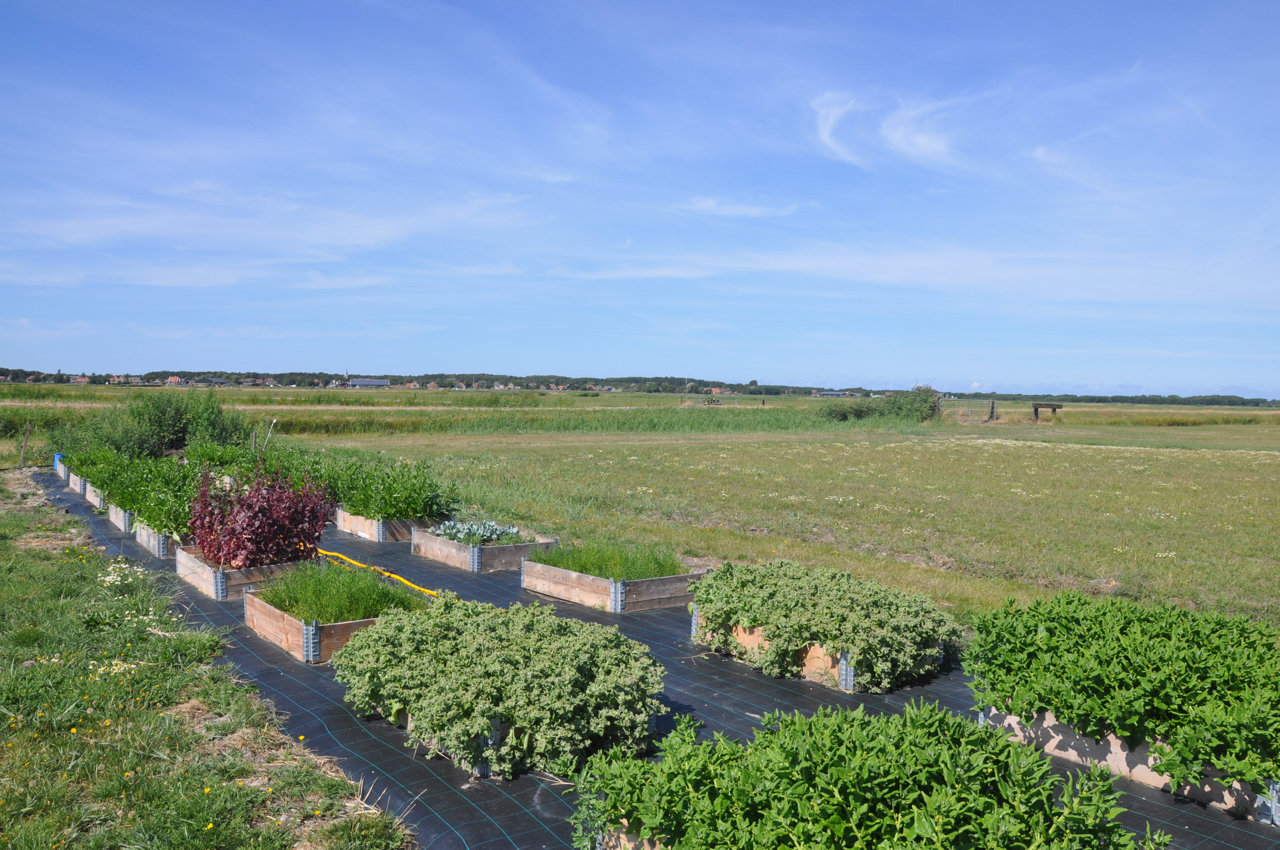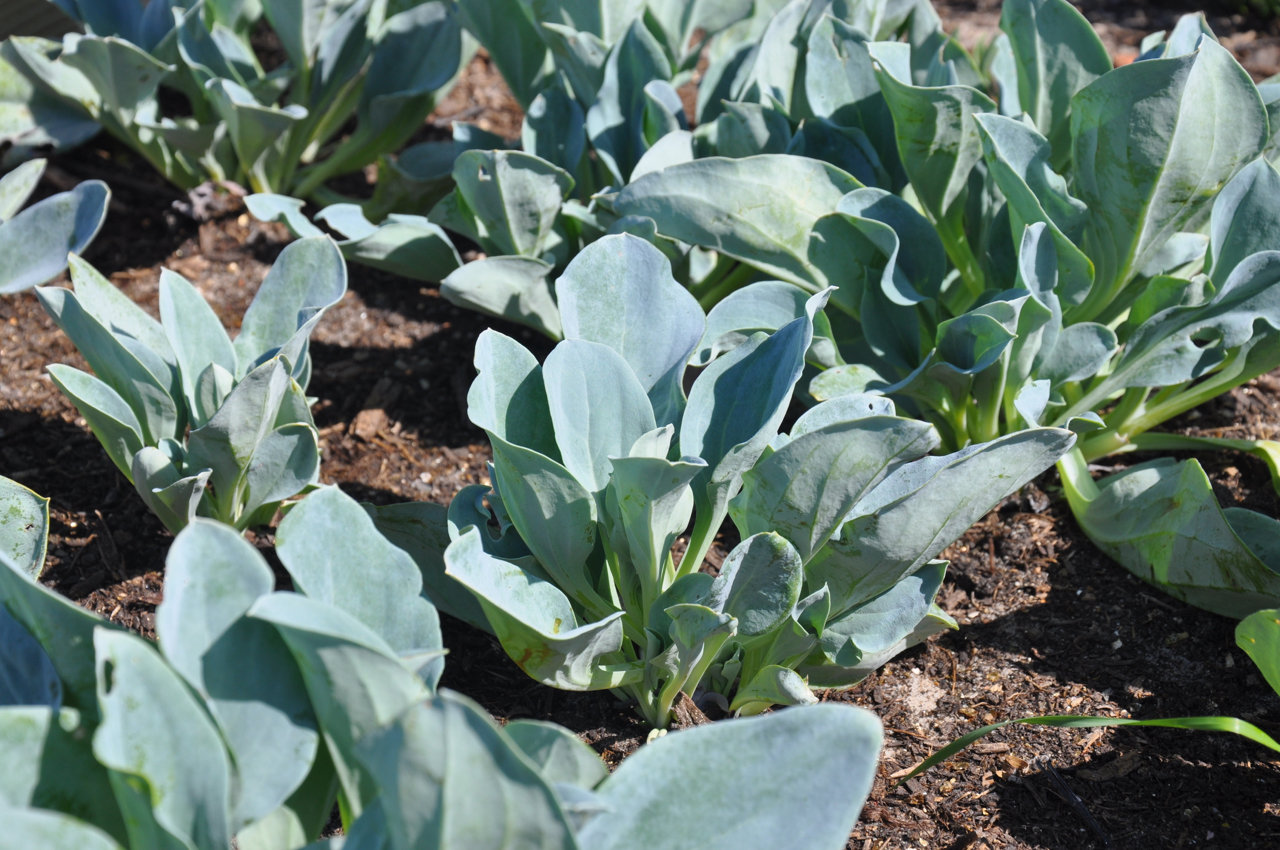How Farmers Are Preparing for a Saltier Future
When Arjan Berkhuysen and his fellow volunteers on the Dutch island of Terschelling looked for a spot to start a garden, they sought the least fertile location they could find. The plot they landed on is just over a dike from the Wadden Sea along the Netherlands’ northern coast. The water in the irrigation ditches is often brackish. For most growers, salinity is an affliction; salt in soil or water can diminish plant health and reduce crop yield. But for this group of gardeners, the spot was ideal.
De Zilte Smaak — “The Salty Taste” — specializes in edible plants that grow in saline conditions, like samphire, tiny spears that resemble asparagus, and tender-leafed sea aster. The salt-loving delicacies grown on this plot end up on plates in restaurants across this island, a popular summer destination. The project is one of a number of initiatives in the Netherlands exploring the possibilities of farming in salty conditions, ranging from edible plants in small-scale gardens like this, to identification of salt-tolerant varietals of conventional crops like potatoes and beets.
 Most of the vegetables De Zilte Smaak grows are distributed to local restaurants. Courtesy of Stichting De Zilte Smaak
Most of the vegetables De Zilte Smaak grows are distributed to local restaurants. Courtesy of Stichting De Zilte Smaak
In the Netherlands and worldwide, more and more farmers are facing challenges with food production as climate change makes soils and water saltier. Globally, an estimated 20 percent of cultivated land is affected by salinity. In the Netherlands, where a quarter of land is below sea level, some regions are seeing impacts already, and salinity is expected to become a more prominent hurdle for agriculture in the decades ahead. But recent developments are proving it’s possible to adapt farming techniques and crops to saline conditions.
“As humans, we tend to always adapt the environment to us,” says Berkhuysen, a member of De Zilte Smaak’s board. “Here, [we] try to adapt ourselves to the environment.”
For cooking, salt can make food tastier. But for farming, it’s generally bad news. When salt becomes concentrated in soil or water, it can damage plants, reduce the yield of crops, and even make farmland useless.
 Oesterblad, or oyster leaf, is among the salt-tolerant plants De Zilte Smaak grows. Courtesy of Stichting De Zilte Smaak
Oesterblad, or oyster leaf, is among the salt-tolerant plants De Zilte Smaak grows. Courtesy of Stichting De Zilte Smaak
“It can be a big problem because for a lot of cash crops salinity is not good,” says Kate Negacz, an assistant professor with Vrije Universiteit Amsterdam’s Institute for Environmental Studies. She heads the Saline Agriculture for Adaptation (SALAD) project, which is researching saline agriculture in Europe and North Africa. “They will perform worse, which can then lead to food security challenges.”
Salinization is not a new problem. Evidence suggests salinity hindered ancient societies from Mesopotamia to Peru. But phenomena associated with climate change and other human activities are driving salinity in a number of ways. Warmer temperatures, for instance, lead to higher rates of evapotranspiration; as water leaves the soil through evaporation and is taken up by plants, salt is left behind. During periods of drought, when there’s little rain, salty seawater can seep inland via groundwater and the mouths of rivers. Even in areas far from the coast, salt can concentrate as groundwater depletes. Rising sea levels are also leading to more flooding involving saline water, leaving impacts on the land.
In a rice-growing region in Vietnam, where salinity once reached 30 to 50 kilometers from the coast, it now is seeping in more than 100 kilometers. Inland areas are affected too: in Australia, severe salinity impacts more than one million hectares of formerly productive farmland. Mid-Atlantic farmers in the United States are struggling with salt patches. Coastal erosion and sea-level rise in Egypt are deteriorating the quality of cultivated land.
The post How Farmers Are Preparing for a Saltier Future appeared first on Reasons to be Cheerful.